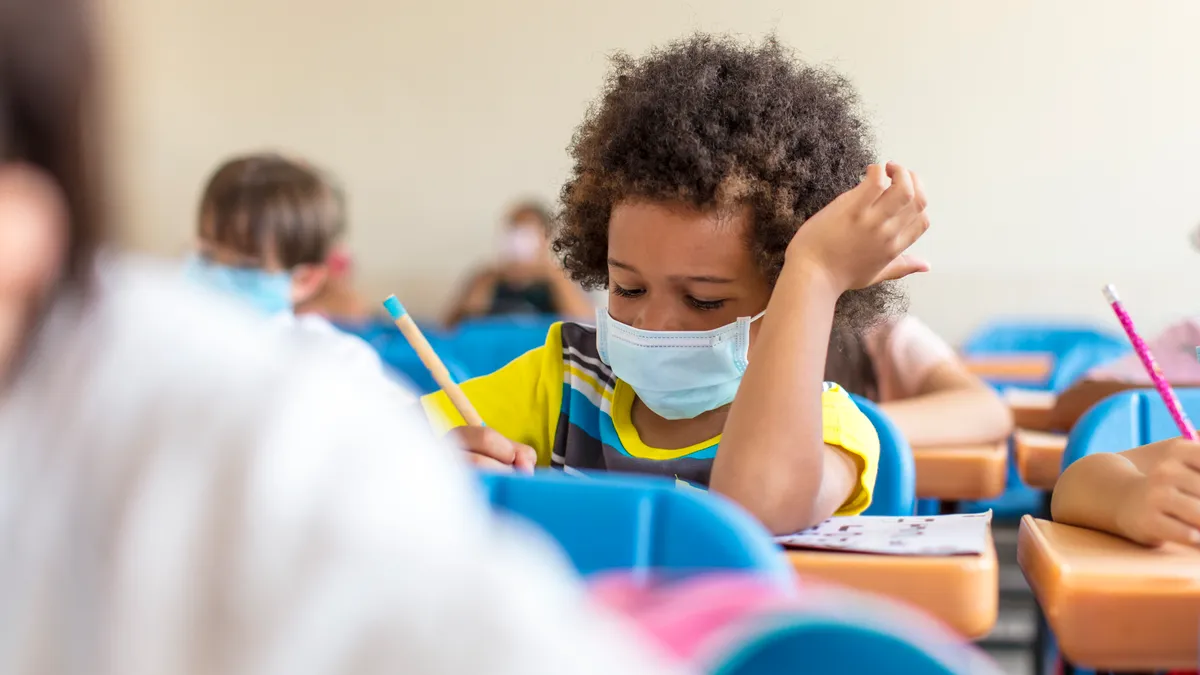Dive Brief:
- Students of color want a challenge when it comes to literacy and should not be automatically remediated, said Kimberly Parker, an educator and literacy consultant and the director of the Crimson Summer Academy at Harvard University, during a Thursday webinar held by ASCD.
- Parker suggested teachers explore different types of literature and writing that go beyond a five-paragraph essay to help students of color end this school year with positive literacy experiences.
- Students of color need to read a range of stories that reflect their backgrounds and tell stories beyond narratives about oppression, she said. For Parker, it’s important to advocate for her students’ right to read what they want in her classrooms as book bans reach schools at local and state levels.
Dive Insight:
Parker encouraged educators to understand what they’re willing to “go to the mat” for when it comes to taking a stand for their students and the work they do in the classroom.
She also stressed the importance of making sure all students have access to literature that can open experiences for them.
In September 2021, there were 60% more challenges to remove books from circulation than in September 2020, according to the American Library Association’s Office for Intellectual Freedom.
No Left Turn in Education, a group that aims to mobilize parents against “political agendas in K-12 education,” has flagged a list of books on its website for spreading messages relating to critical race theory, anti-police or comprehensive sexuality education.
Banning books is a slippery slope, Parker said, and people need to speak up about why students and communities need access to all books.
When Parker looks at the types of books being banned from schools, she’s noticed works from writers of color and LGBT authors.
“I’m opposed to removing anything, because once we start doing one, we start doing all,” Parker said. “What kind of narratives are we going to have left? It’s just so problematic.”
As educators reevaluate how to engage students in positive literacy practices, Parker said it’s critical to acknowledge the ongoing COVID-19 pandemic has disproportionately impacted communities of color.
Over the past two years of the pandemic students have struggled with mental health and emotional literacy, she said, and they want connection, love and to feel seen by teachers.
Students need reasons to motivate themselves, and teachers need to see them beyond their behavior in the classroom, Parker said. Teachers should also ask students what they think about the learning material and what they need in class to be successful, she said.
Children will thrive in classrooms where teachers tell them it’s OK to fail, Parker said. “It teaches them, ‘You’re going to mess up, mistakes are going to be made, things won’t work.’ It’s really important to fail and realize the world won’t end.”
If educators find students are not engaged in reading assignments, then it’s key to recognize when literacy curriculum isn’t working and to let it go and try something else, Parker said.
“That leads us to solutions, but first we’ve got to acknowledge and make peace with what isn’t working and do it without shame, blame or judgment,” Parker said.
Overall, trying something new, like consistently implementing individual choice reading, she said, could potentially help move a teacher forward in ways that directly respond to student needs.













